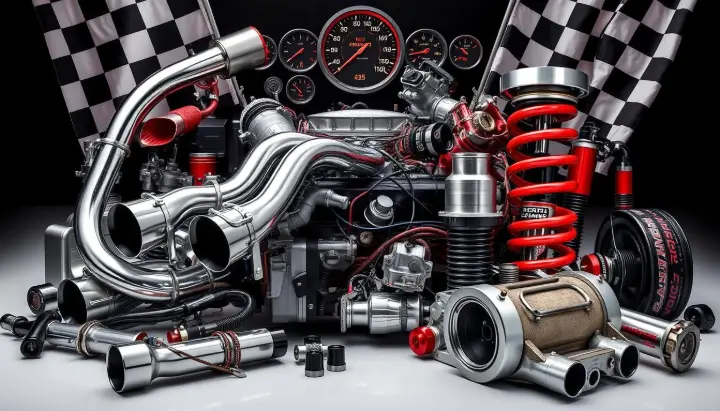
In the expansive realm of automotive customization, few niches combine engineering precision, musical artistry, and street culture quite like Donkshakers. The name alone evokes images of towering custom cars, ground-shaking bass lines, and a community bound by its love for turning ordinary rides into rolling sound experiences. While the term might sound unusual to the uninitiated, within certain circles, Donkshakers represents a lifestyle—one where automotive design and audio performance collide in spectacular fashion.
Origins of the Donk Culture
To understand Donkshakers, it’s essential to trace the roots of Donk culture. Originating primarily in urban areas of Florida during the late 1970s and early 1980s, “donk” referred to customized Chevrolet Caprice and Impala models from the mid-1970s. These vehicles were often elevated on oversized rims, painted in eye-catching colors, and fitted with elaborate interiors. Over time, the visual modifications evolved, but so did the emphasis on in-car entertainment systems, especially massive subwoofer setups.
Donkshakers, in this sense, became the heartbeat of the scene. The name speaks to the bass-heavy music systems that can literally shake a car—and the street it’s parked on. The thundering low frequencies became both a badge of honor and a competitive element among enthusiasts.
The Essence of Donkshakers
At its core, Donkshakers refers to powerful, high-capacity subwoofer systems built for maximum bass output. These systems aren’t just about loudness—they are about clarity, deep frequency response, and the ability to project sound that can be both felt and heard. In the Donk community, audio systems are as much a showcase of craftsmanship as the paint job or the rim size.
A typical Donkshakers setup involves:
-
High-wattage amplifiers capable of driving multiple subwoofers.
-
Custom-built speaker enclosures, often tailored to the acoustics of the specific car.
-
Reinforced electrical systems, including extra batteries or alternators to keep the sound consistent.
-
Soundproofing and insulation to enhance bass response and reduce unwanted rattling.
It’s a fusion of audio engineering and creative customization, resulting in cars that double as mobile concert halls.
The Competitive Side
One of the most exciting aspects of Donkshakers culture is the competition scene. Enthusiasts often gather at events to show off their vehicles, not only for visual aesthetics but for audio supremacy. These competitions can be judged on several criteria:
-
Decibel Level: How loud can the system get without distortion?
-
Sound Quality: Is the bass tight, clean, and well-balanced with mid and high frequencies?
-
Installation Craftsmanship: How well has the system been integrated into the vehicle’s design?
Some events feature SPL (Sound Pressure Level) contests, where cars are measured using specialized meters to determine whose system produces the highest sound pressure. Others focus on sound quality competitions that reward precision over pure volume.
Music and Style
The Donkshakers phenomenon is tied closely to music genres that emphasize bass—hip-hop, Miami bass, trap, and Southern rap are staples. These styles provide the deep, rolling basslines that let subwoofers shine. The music isn’t just for entertainment; it’s an integral part of the cultural identity.
Drivers often curate playlists designed to showcase the full capability of their systems. Some songs are chosen not just for their popularity but for their ability to push the limits of a sound system’s frequency response.
Craftsmanship and Innovation
Donkshakers setups demand a level of technical expertise that goes far beyond simply installing a store-bought stereo. Many enthusiasts work with skilled fabricators or become self-taught experts in woodworking, electronics, and acoustic tuning. Custom speaker boxes might be sculpted to match the curves of a car’s trunk, illuminated with LED lighting, or wrapped in exotic materials.
Innovation plays a huge role. As technology evolves, so do Donkshakers builds. Digital signal processors (DSPs) allow for fine-tuning of sound profiles, while lightweight yet rigid subwoofer cones improve efficiency. Battery technology has also advanced, enabling longer playtime without straining the car’s electrical system.
The Social Element
For many, Donkshakers is more than a hobby—it’s a social network in the real world. Car meets, shows, and cruises bring enthusiasts together, fostering camaraderie and friendly rivalry. It’s not unusual to see owners swapping tips, lending tools, or even collaborating on projects.
Social media has amplified this culture, allowing builders to share their setups with a global audience. Videos of bass tests, system demos, and build progress attract millions of views, inspiring the next generation of Donkshakers builders.
Challenges and Criticisms
Like any subculture, Donkshakers has faced its share of challenges. Noise ordinances in many cities can make public demonstrations tricky, and some critics view the loud systems as disruptive. There’s also the financial aspect—building a top-tier Donkshakers setup can cost thousands, even tens of thousands, of dollars, making it a pursuit for those willing to invest heavily.
However, many in the community counter these criticisms by emphasizing the artistry, engineering, and positive community spirit behind the movement. For them, it’s a form of creative expression, much like customizing a motorcycle or restoring a classic car.
Modern Evolution
While the origins of Donkshakers are deeply tied to classic donk-style cars, the concept has expanded. Today, you’ll find similar bass-focused systems in trucks, SUVs, and even boats. Advances in compact subwoofer technology mean that newer vehicles can achieve the same earth-shaking effect without requiring massive enclosures.
Some builders are experimenting with eco-friendly modifications, using sustainable materials for speaker enclosures or integrating solar charging systems to reduce the environmental impact. Others are focusing on hybrid sound systems that balance powerful bass with crystal-clear vocals and instrumentals, catering to a wider range of musical tastes.
Cultural Impact
Donkshakers represents a blending of music, technology, and lifestyle that’s uniquely American yet increasingly global. From car shows in Atlanta to bass battles in Tokyo, the spirit of the movement has crossed borders, proving that the love for deep, resonant sound is universal.
It has also influenced mainstream automotive audio design. Many car manufacturers now offer premium audio packages with subwoofers as standard equipment, a nod to the demand for bass-rich sound that cultures like Donkshakers helped popularize.
The Future of Donkshakers
Looking ahead, the future of Donkshakers will likely be shaped by emerging technologies. Wireless audio integration, AI-assisted tuning systems, and ultra-light subwoofer materials could make high-performance sound systems more accessible and versatile. As electric vehicles become more common, the quieter engines may actually make bass systems stand out even more, giving Donkshakers builders a fresh canvas to work with.
Regardless of the technological shifts, the core values—passion, creativity, and community—will remain at the heart of the culture. Whether it’s the roar of an old-school donk on 30-inch rims or a sleek electric SUV with a hidden powerhouse of subs, the goal is the same: to make people feel the music, not just hear it.
In essence, Donkshakers is more than just a car audio setup—it’s an art form, a competition, and a social bond. It reflects a dedication to pushing boundaries, both sonically and visually. For those who live and breathe this culture, the deep rumble of bass isn’t just sound—it’s a heartbeat, a statement, and a celebration of what happens when passion meets engineering.






